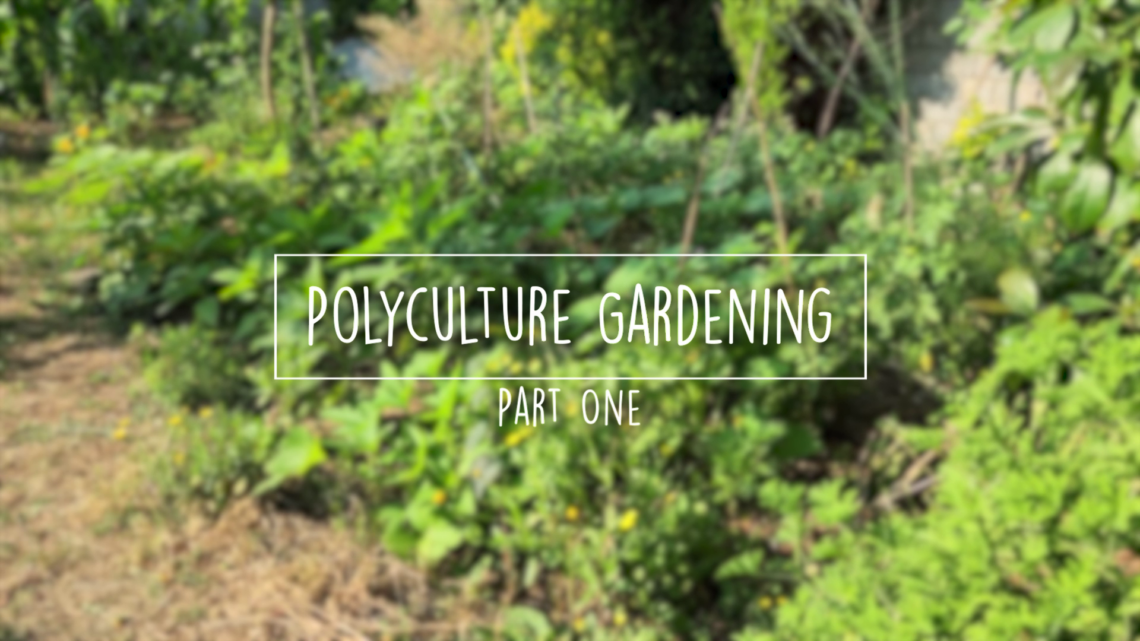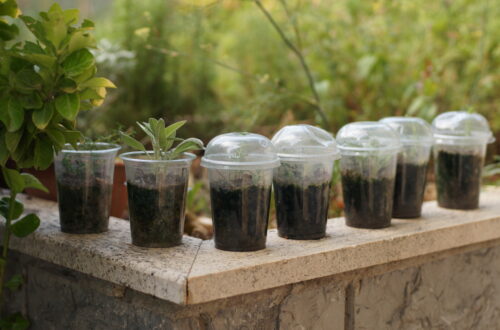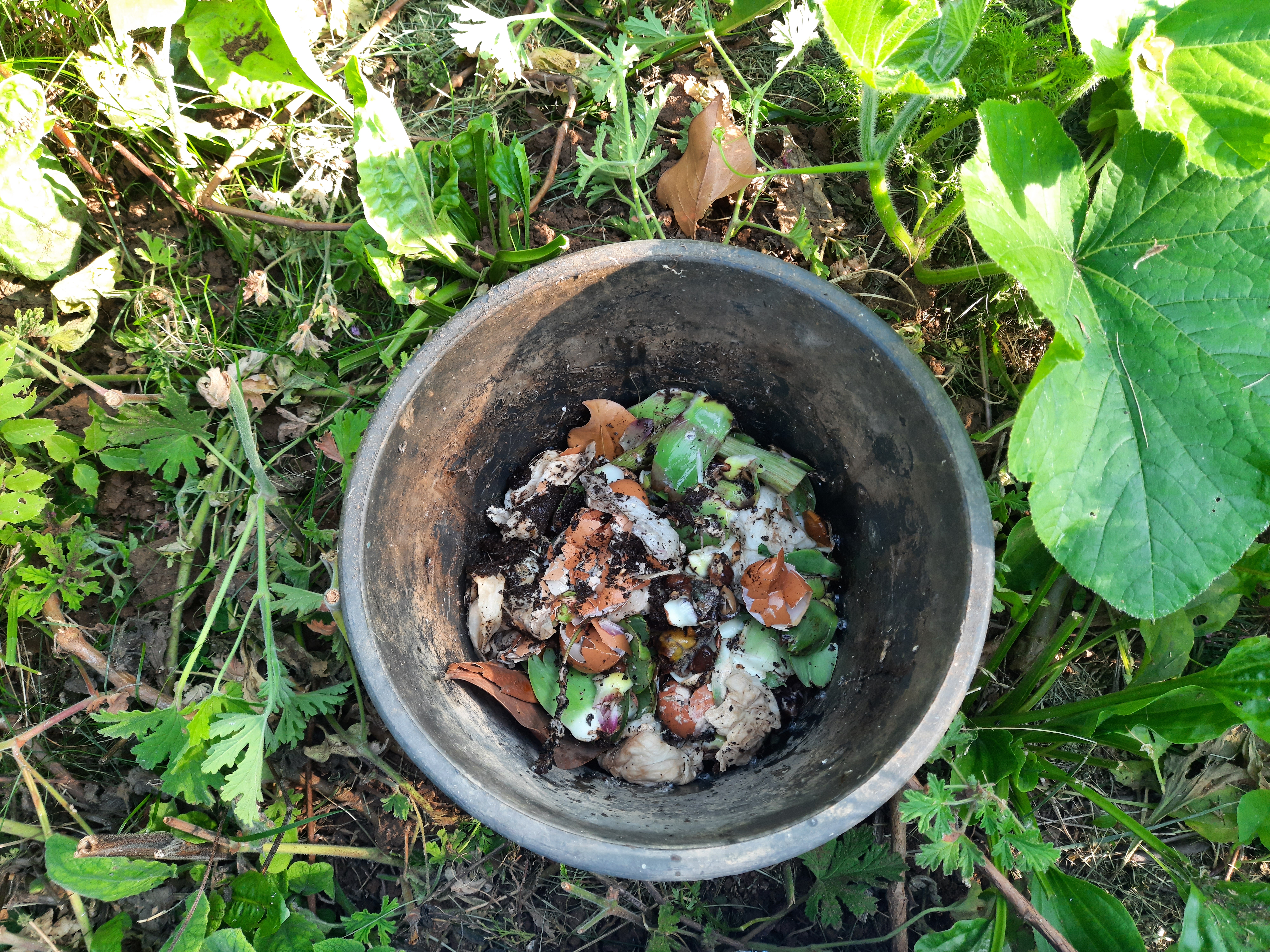
Polyculture Gardening-Part I
I’ve been researching and experimenting on polyculture gardening for a couple of seasons and I can see that it works very well! There are more pollinators and beneficial insects as well as birds in the garden now. It’s hard to see things change in one season, it takes time for living beings to adapt to your garden.
It’s a known fact that if you grow one kind of plant in neat rows, once pests will discover them there’s no chance that you’ll get rid of them (unless you use heavy chemical pesticides which are harmful for both humans and other living beings) .
But If you plant different kinds of companion plants together some of them will distract pests, some of them will attract predator insects and everyone will be happy!
We made a little video showing the different vegetables in one of our vegetable beds and I wrote down some explanation about each plant below. I hope you’ll find it helpful!
Avocado
Two avocado trees sprouted 2 years ago from vegetable scraps that I’ve buried in there and have been growing ever since. They endured frost, snow and heavy winds. There are two walls close to them which keeps them warm, and a very tall Himalayan Cedar tree on top of them that protects them from heavy rains and snow.
Mint
I planted mint to confuse pests with its smell and attract beneficial insects. It’s a wonderful hardy plant which has many culinary and medicinal uses. It just has to be kept in control, otherwise it will spread all over the bed. The best way to do it is to prune the spreading branches and air dry them for later culinary uses.
Tomatoes
Tomatoes are the stars of the summer vegetable garden! I love both growing and eating them!
I think of them as the main element of the garden bed and disperse the other plants around it.
Zucchini and Patty Pan Squash
I interplanted tomatoes with zucchini so they will shade the ground below, creating a living mulch. I used two varieties with the risk of being cross pollinated but so far so good!
Pumpkin
It makes a wonderful groundcover and provides amazing food for winter!
Fennel
Everyone says fennel stunts the growth of other vegetables around it, but I don’t think it’s true!
This one has been in the same spot for almost 3 years and tomatoes don’t seem to mind it!
Fennel is a perennial herb that I use fresh in salads, stir fries, pastas and so on! I also collect its seeds to use in herbal teas and savory cakes . The larvae of anise swallowtail butterfly feed on it and it’s an aphid trap!
Calendula
Ever since I first sowed calendula seeds in the garden they kept self seeding and flowering all year long! They are a good aphid trap , beneficial insect and pollinator attractor and they deter nematodes. In the beginning of spring they were about to take over the vegetable bed, so I pruned them heavily and lay them as mulch.They decomposed quickly, providing nutrients for the soil.
The flowers are medicinal, an infused oil made with them heals wounds, rashes and insect bites. I collect them all year long and dry them for later use.
Mallow
Mallow is a volunteer in the garden bed. It attracts pollinators such as bees, butterflies and hoverflies. It’s perennial and has beautiful flowers. Both flowers and leaves are highly medicinal, used in many different cultures for healing wounds, toothaches, joint pains and so on. It’s a hardy plant with edible leaves that are similar to spinach in taste.
Marigold
The most well known and used companion plant for tomatoes is marigold. It’s easy to grow and has beautiful flowers that attract beneficial insects such as hoverflies, ladybugs, lacewings and parasitic wasps. Where ever I planted a tomato, I planted a marigold.
Oh it’s also a dye plant that gives yellow color!
Sunchokes
On the outer edge of the bed I planted sunchokes. They grow tall and create a living fence. I had five kittens last year and I had to discourage them from using my veggie bed as toilet! So I went out and got a kilo of them from the farmer’s market and planted them in last year’s spring. They grew very tall and made the living fence that I imagined!
We harvested lots of them in October through December and left some in the ground for this year. They all sprouted towards the end of May. In fact too many of them sprouted, so I thinned them by moving them to the empty spots in the garden (you can read about it here ) .
Borage
I read about borage and its benefits so much that this year I decided to plant some! The seeds sprout easily in early spring but slugs love them and it’s a little hard to protect them . One day the seedlings are great with large leaves, next day they’re totally eaten! From the 5-6 seedlings only 3 remained and they’re flowering now!
It attracts pollinators, deters pests and adds trace minerals to the soil plus the leaves and flowers are edible! I’m hoping for it to self seed and remain in the garden forever!
Cucumber
As the sunchokes grow very tall, I planted cucumbers next to them so they can climb on it.
Beans
They provide nitrogen to the soil, so I planted climbing ones next to sunchokes and some bush types next to tomatoes.
Basil
Even though they are not seen on the video, I planted red and regular basil in the empty spots next to tomatoes. They deter pests with their smell and I heard that they make tomatoes taste better! I also like them a lot in salads and pasta sauces. Such a fresh taste!
Catnip (Nepeta cataria)
It’s a hardy perennial herb that attracts beneficial insects. Its tiny flowers attracts all kinds of bees.It self seeds and you can remove the seedlings to next to fruit trees or other empty spots in the garden.
We add it to our herbal tea blends all year long. It aids digestion, is mildly sedative and tastes great! As with cats…some love them and some ignore them. Only 2 out of 5 kittens in our garden liked it.


You May Also Like

Recycling Plastic Cups
November 24, 2020
Compost Bucket for Composting in Situ
March 8, 2024
